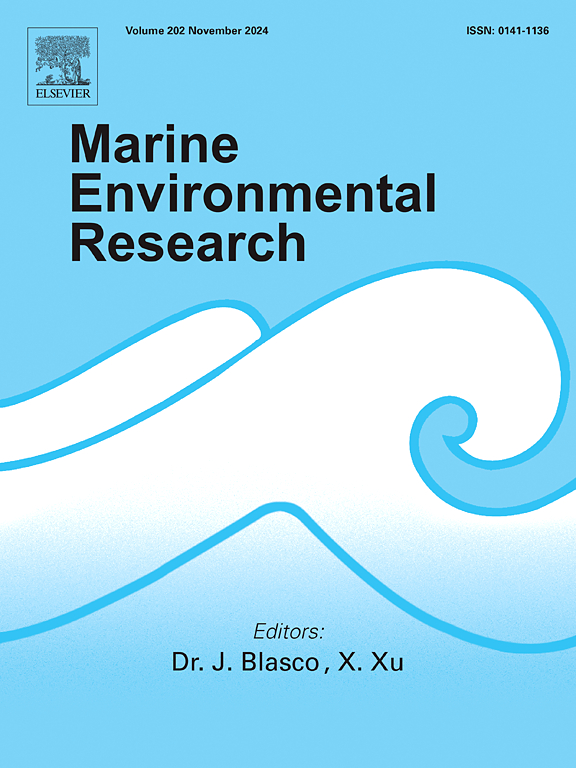Key environmental parameters and numerical prediction model of jellyfish bloom in Qingchuan Bay Nuclear Power Plant, China
IF 3
3区 环境科学与生态学
Q2 ENVIRONMENTAL SCIENCES
引用次数: 0
Abstract
In recent years, there has been a notable increase in cooling water intake blockage caused by marine organism blooms at coastal nuclear power plants worldwide, resulting in shutdowns of nuclear power plants and large economic losses. A sizable portion of these incidents were caused by blooms from jellyfish, a planktonic invertebrate with a unique growth pattern. Suitable external conditions are conducive to the rapid growth of jellyfish, and blooms can occur within a few days. In order to better predict jellyfish bloom and enable nuclear power plants to prepare for it in advance, this study explores the numerical relationship between jellyfish biomass and environmental parameters. A series of time windows (evaluation intervals) were defined and constructed by a time-series recursive approach, which solved the problem of poor correlation between jellyfish biomass and environmental parameters at non-bloom points. The optimal time window length D = 10 was obtained, and the key environmental parameters affecting jellyfish biomass were screened as sea surface temperature, salinity, voltage value, dissolved oxygen, and chlorophyll. According to the ADF and KPSS tests, the key parameters have no significant time dependence, which ensures the stability and reliability of the subsequent predictions. The jellyfish bloom prediction model was derived by calculating the score F through the recursive Principal Component Analysis of the key environmental parameter in the time interval preceding the prediction point. The sudden change moments of score F correspond well to the jellyfish bloom moments, and the sudden change moments are all advanced for a period of time compared to the bloom time, which can provide valuable time for the nuclear power plant to organize manpower to deal with the blockage. Finally, a maximum score F threshold model was proposed to be coupled with the jellyfish bloom prediction model to provide a more robust basis for early warning of jellyfish at nuclear power plants.
中国青川湾核电站水母水华的关键环境参数和数值预测模型
近年来,全球沿海核电站因海洋生物大量繁殖而导致冷却水进水口堵塞的事件明显增多,造成核电站停运和巨大的经济损失。在这些事故中,有相当一部分是由水母藻引起的,水母藻是一种具有独特生长模式的浮游无脊椎动物。适宜的外部条件有利于水母的快速生长,水母水华可在几天内出现。为了更好地预测水母大量繁殖,使核电站能够提前做好准备,本研究探讨了水母生物量与环境参数之间的数值关系。研究采用时间序列递归方法定义并构建了一系列时间窗(评估区间),解决了水母生物量与非藻华点环境参数相关性差的问题。得到最佳时间窗长度 D = 10,筛选出影响水母生物量的关键环境参数为海面温度、盐度、电压值、溶解氧和叶绿素。根据 ADF 和 KPSS 检验,关键参数没有显著的时间依赖性,保证了后续预测的稳定性和可靠性。水母水华预测模型是通过对预测点前时间间隔内的关键环境参数进行递归主成分分析计算得分 F 得出的。得分 F 的突变时刻与水母水华时刻非常吻合,而且突变时刻都比水母水华时间提前了一段时间,这可以为核电站组织人力处理堵塞提供宝贵的时间。最后,提出了一个最大得分 F 阈值模型,与水母水华预测模型相结合,为核电站水母水华预警提供了更可靠的依据。
本文章由计算机程序翻译,如有差异,请以英文原文为准。
求助全文
约1分钟内获得全文
求助全文
来源期刊

Marine environmental research
环境科学-毒理学
CiteScore
5.90
自引率
3.00%
发文量
217
审稿时长
46 days
期刊介绍:
Marine Environmental Research publishes original research papers on chemical, physical, and biological interactions in the oceans and coastal waters. The journal serves as a forum for new information on biology, chemistry, and toxicology and syntheses that advance understanding of marine environmental processes.
Submission of multidisciplinary studies is encouraged. Studies that utilize experimental approaches to clarify the roles of anthropogenic and natural causes of changes in marine ecosystems are especially welcome, as are those studies that represent new developments of a theoretical or conceptual aspect of marine science. All papers published in this journal are reviewed by qualified peers prior to acceptance and publication. Examples of topics considered to be appropriate for the journal include, but are not limited to, the following:
– The extent, persistence, and consequences of change and the recovery from such change in natural marine systems
– The biochemical, physiological, and ecological consequences of contaminants to marine organisms and ecosystems
– The biogeochemistry of naturally occurring and anthropogenic substances
– Models that describe and predict the above processes
– Monitoring studies, to the extent that their results provide new information on functional processes
– Methodological papers describing improved quantitative techniques for the marine sciences.
 求助内容:
求助内容: 应助结果提醒方式:
应助结果提醒方式:


